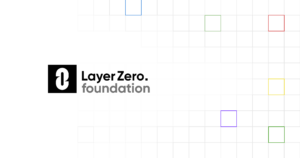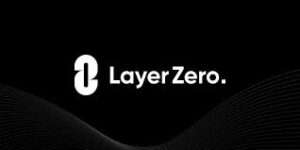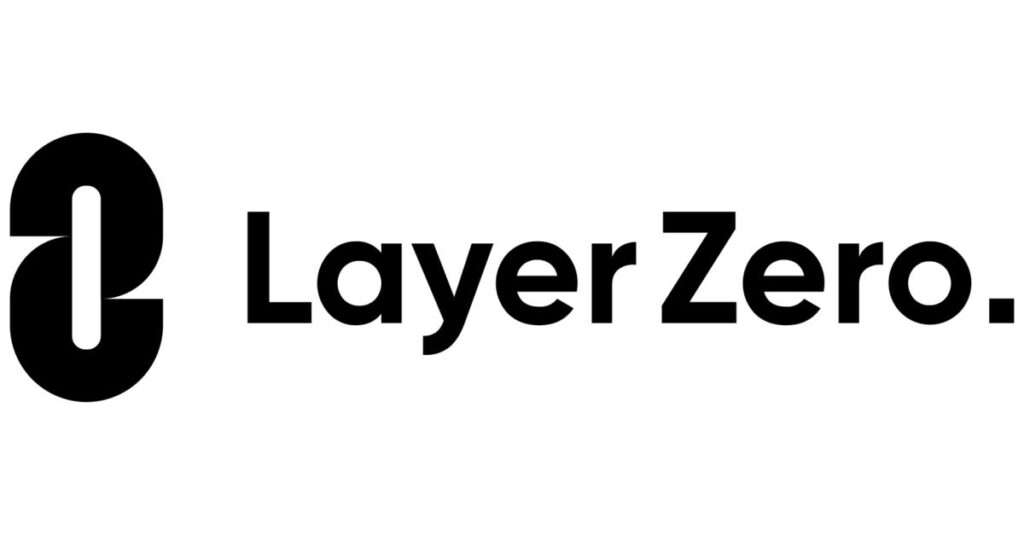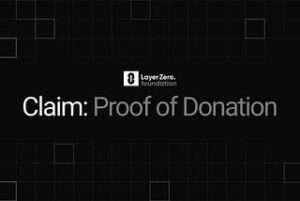Latest News
- Interoperability Protocol Asset Surges After a16z Acquires $55,000,000 Worth of the Project’s Native Asset
- Andreessen Horowitz Shows Long-Term Commitment to LayerZero With $55M ZRO Investment
- a16z Crypto Invests $55 Million in LayerZero Tokens
- Andreessen Horowitz (A16Z) Acquires an Additional $55M of LayerZero (ZRO) Tokens
Current Price
The current price of ZRO is $2.49373
Introduction
LayerZero (ZRO) presents a significant advancement in the domain of blockchain interoperability, utilizing an omnichain framework to foster efficient communication across various networks.
Its design prioritizes scalability and cost-effectiveness, making it an attractive option for developers of decentralized applications.
Nevertheless, the potential complexities and centralization risks inherent in its architecture cannot be overlooked.
As we explore the intricacies of LayerZero, it becomes essential to evaluate not only its benefits but also the challenges it faces in the rapidly evolving landscape of decentralized finance.
What implications might this have for its future viability? Let’s find out…
Quick Overview
- LayerZero offers omnichain interoperability, allowing seamless communication between diverse blockchains to enhance user experience and application functionality.
- Its lightweight architecture minimizes complexity and reduces transaction costs, promoting efficiency in cross-chain interactions.
- The protocol employs oracle relayers for secure message delivery, but reliance on them introduces potential centralization risks.
- LayerZero supports various use cases, including DeFi, NFTs, and data oracles, addressing the growing demand for cross-chain solutions.
- Future developments aim to enhance security, expand the ecosystem, and improve user experience, ensuring adaptability in a diversifying blockchain landscape.

Overview of LayerZero
What distinguishes LayerZero from other blockchain protocols? LayerZero presents a novel approach to interoperability, aiming to bridge various blockchain ecosystems while guaranteeing seamless communication and transaction execution.
Unlike traditional blockchain architectures that often operate in silos, LayerZero employs a unique omnichain framework, allowing diverse networks to interact in a cohesive manner. This design fosters an environment where assets and information can transfer across different chains without the need for cumbersome intermediaries.
The architecture of LayerZero is built on a lightweight protocol, which minimizes overhead and enhances scalability. By utilizing a relayer-based model, it guarantees that cross-chain interactions are not only efficient but also secure. This model allows LayerZero to maintain the integrity and authenticity of transactions, addressing common vulnerabilities associated with cross-chain operations.
Furthermore, LayerZero’s focus on developer accessibility sets it apart, providing tools and resources that simplify the integration of cross-chain functionalities. This commitment to usability encourages innovation and participation from developers, ultimately enhancing the ecosystem’s growth.
To conclude, LayerZero’s emphasis on interoperability, efficiency, and developer-friendliness positions it as a forward-thinking solution in the evolving blockchain landscape.
Key Features of LayerZero
LayerZero boasts several key features that enhance its functionality and appeal within the blockchain ecosystem. One of the most significant attributes of LayerZero is its omnichain interoperability, which enables seamless communication and data transfer across multiple blockchains. This capability addresses one of the major challenges in the blockchain space—fragmentation—allowing developers to build applications that can leverage resources and functionalities from various chains.
Another remarkable feature is its lightweight architecture, which minimizes the need for complex cross-chain infrastructures. LayerZero utilizes a unique approach called “oracle relayers” to facilitate secure and efficient message delivery between different blockchain networks. This design not only reduces latency but also enhances the overall user experience by ensuring faster transaction times.
Additionally, LayerZero incorporates a robust security model that mitigates risks associated with cross-chain interactions. By leveraging cryptographic proofs and maintaining a decentralized network of validators, it provides a high level of assurance against potential vulnerabilities.
Benefits of Using LayerZero
LayerZero offers significant advantages in the domain of blockchain technology, particularly through enhanced cross-chain communication.
This capability facilitates seamless interactions between different blockchain networks, enabling a more interconnected ecosystem.
Additionally, the protocol contributes to reduced transaction costs, making it an appealing option for users seeking efficiency and cost-effectiveness in their operations.
Enhanced Cross-Chain Communication
Releasing the potential of blockchain technology requires seamless interoperability between different networks, and LayerZero excels in this regard by facilitating enhanced cross-chain communication.
Its architecture allows disparate blockchain ecosystems to interact efficiently, which is critical for the burgeoning decentralized finance (DeFi) sector and other blockchain applications. The significance of this capability cannot be overstated, as it addresses some of the most pressing challenges in the current blockchain landscape.
The benefits of enhanced cross-chain communication through LayerZero include:
- Increased Liquidity: By enabling assets to move freely between chains, LayerZero enhances liquidity across various platforms, which can lead to more robust market conditions.
- Broader Access to Services: Users can leverage the unique features of multiple blockchains simultaneously, leading to a richer ecosystem of decentralized applications (dApps).
- Improved User Experience: Streamlined interaction across chains minimizes friction for users, making it easier to engage with different protocols without the need for cumbersome workarounds.

Reduced Transaction Costs
While many blockchain platforms grapple with high transaction fees that can deter user engagement, the implementation of LayerZero provides a compelling solution through reduced transaction costs. By leveraging its unique architecture, LayerZero facilitates efficient cross-chain interactions without the need for multiple intermediary transactions, markedly lowering the fees typically associated with such operations.
The reduced transaction costs are primarily attributed to LayerZero’s ability to optimize the routes taken by transactions across different networks. This optimization minimizes the number of hops required, thereby decreasing the computational demand and associated fees.
Additionally, LayerZero employs a lightweight protocol that enhances transaction throughput, allowing for more efficient processing and further cost reduction.
Moreover, the platform encourages decentralized applications (dApps) to operate across multiple chains seamlessly, eliminating the need for users to pay exorbitant fees for transactions on isolated networks. This not only fosters greater user engagement but also promotes a more vibrant ecosystem where developers can innovate without the financial burden of high transaction costs.
Ultimately, LayerZero’s approach to reducing transaction expenses positions it as a favorable option for both users and developers in the evolving blockchain landscape.
Potential Drawbacks
While LayerZero presents several advantages, it is essential to evaluate its potential drawbacks, particularly concerning security and scalability.
Security concerns arise from the complexity of its architecture, which may introduce vulnerabilities that could be exploited.
Additionally, scalability challenges could hinder LayerZero’s ability to efficiently manage increased transaction volumes as demand grows.
Security Concerns
Numerous security concerns surrounding LayerZero (ZRO) warrant careful consideration by potential users and investors.
As a cross-chain protocol, LayerZero facilitates communication between different blockchain networks, which inherently introduces specific vulnerabilities that could be exploited. The intricacies of bridging assets across chains can expose both users and the protocol to risks that require thorough assessment.
Key security issues include:
- Centralization Risks: The reliance on oracles and relayers may create single points of failure, potentially allowing malicious actors to manipulate data or disrupt operations.
- Smart Contract Vulnerabilities: The complexity of smart contracts within LayerZero could lead to coding errors, making them susceptible to attacks like reentrancy or overflow exploits.
- User Error: As with any decentralized platform, users must diligently manage their private keys. Loss or theft can result in irrevocable asset loss.
Scalability Challenges
The security concerns surrounding LayerZero (ZRO) serve as a backdrop to examining its scalability challenges. Despite its innovative architecture designed to facilitate cross-chain communication, LayerZero faces significant hurdles in achieving scalability that could limit its long-term viability.
Primarily, the reliance on a decentralized oracle network to facilitate inter-chain messaging may introduce latency as network congestion increases. As more transactions are executed across multiple chains, the demand for efficient data relay could overwhelm the existing infrastructure, resulting in delays and potential transaction failures.
Moreover, the current consensus mechanism employed by LayerZero is not fully optimized for high throughput. While it provides robust security features, the trade-off may be a bottleneck during peak usage periods. Future upgrades will be necessary to enhance the network’s capacity without compromising its foundational principles.
Lastly, the complexity of integrating various blockchain ecosystems could lead to unforeseen scaling issues, particularly as new chains and applications are incorporated. Addressing these challenges will be essential for LayerZero to maintain its competitive edge and fulfill the promise of a truly scalable cross-chain solution.

Use Cases and Applications
LayerZero (ZRO) presents a versatile framework that facilitates seamless communication between various blockchain networks, enabling a wide array of use cases and applications. Its core functionality focuses on interoperability, allowing disparate blockchain ecosystems to interact effectively.
This capability is essential as the blockchain landscape continues to diversify, leading to an increased demand for cross-chain solutions.
The applications of LayerZero extend across multiple sectors, emphasizing its potential to enhance existing blockchain functionalities. Notable use cases include:
- Decentralized Finance (DeFi): LayerZero enables cross-chain lending, borrowing, and swapping, enhancing liquidity and expanding market access.
- Non-Fungible Tokens (NFTs): The framework allows for the transfer and trading of NFTs across various platforms, fostering a more interconnected digital art ecosystem.
- Data Oracles: LayerZero can facilitate the secure and efficient transfer of data between blockchains, empowering smart contracts with real-time information.
Comparison With Other Solutions
Several blockchain interoperability solutions have emerged in response to the growing demand for seamless cross-chain functionality. Among these, LayerZero distinguishes itself through its unique architecture that facilitates omnichain capabilities, enabling decentralized applications (dApps) to communicate across multiple blockchain networks without the need for intermediaries.
This contrasts with traditional solutions, such as atomic swaps and wrapped tokens, which often impose limitations on speed, security, or scalability.
For instance, Polkadot employs a relay chain structure to connect various blockchains, ensuring interoperability while also creating potential bottlenecks that may affect performance. On the other hand, Cosmos utilizes the Inter-Blockchain Communication (IBC) protocol, promoting interoperability but requiring each chain to be IBC-compatible.
In comparison, LayerZero’s lightweight protocol allows for greater flexibility and efficiency, as it does not necessitate extensive modifications to existing chains.
Moreover, existing solutions often prioritize either security or usability, whereas LayerZero aims to balance both, promoting a more user-friendly experience for developers and end-users.
As the blockchain ecosystem continues to evolve, LayerZero’s innovative approach positions it as a formidable contender in the race for effective cross-chain solutions.
Future Prospects and Developments
Blockchain interoperability is poised for significant advancements as projects like LayerZero continue to innovate. The increasing demand for seamless communication between disparate blockchain networks underscores the necessity for robust solutions. LayerZero’s unique architecture, which utilizes a lightweight protocol for cross-chain interactions, is set to enhance the scalability and efficiency of decentralized applications (dApps).
Future developments in LayerZero may focus on several key areas:
- Enhanced Security Protocols: Continuous improvements in security measures will be crucial to safeguard cross-chain transactions against potential vulnerabilities.
- Ecosystem Expansion: Collaborations with additional blockchain networks and dApps could broaden LayerZero’s utility, fostering a more interconnected blockchain landscape.
- User Experience Improvements: Streamlining user interactions and improving the interface for developers will be essential to drive adoption and simplify the integration process.
As LayerZero continues to refine its technology and expand its reach, it has the potential to redefine the standards of blockchain interoperability, making it a significant player in the evolving landscape of decentralized finance (DeFi) and beyond.
The success of LayerZero will likely depend on its ability to adapt to market needs and technological advancements.
Frequently Asked Questions
What Is the Origin of Layerzero’s Technology?
The origin of LayerZero’s technology stems from a need for seamless cross-chain communication, enabling interoperability among various blockchain networks. This innovative approach leverages advanced cryptographic techniques and decentralized protocols to enhance scalability and user experience.
Who Are the Founders of Layerzero?
The founders of LayerZero are Austin Federa, who serves as the Chief Executive Officer, and his co-founders, who collectively bring extensive experience in blockchain technology and decentralized systems, enhancing the platform’s innovative approach to interoperability.
How Does Layerzero Ensure Security in Transactions?
To guarantee security in transactions, protocols typically employ multi-signature mechanisms, cryptographic validation, and decentralized consensus models, which collectively mitigate risks of fraud and unauthorized access, enhancing overall integrity and trust in the transaction process.
What Is the Current Market Capitalization of Layerzero (Zro)?
As of October 2023, the current market capitalization of LayerZero (ZRO) fluctuates based on market conditions. Investors should consult reliable financial data sources for the most accurate and up-to-date valuation of this cryptocurrency.
Are There Any Partnerships or Collaborations Involving Layerzero?
Partnerships and collaborations play an essential role in enhancing a project’s ecosystem. Evaluating LayerZero’s strategic alliances reveals a focus on interoperability and network expansion, which may greatly influence its market positioning and technological advancements within the blockchain landscape.
Wrapping Up
In summary, LayerZero (ZRO) represents a significant advancement in blockchain interoperability, offering a robust framework for cross-network communication and enhanced scalability.
While benefits such as reduced transaction costs and support for decentralized applications are notable, the complexities of its architecture and potential centralization risks warrant careful consideration.
As the blockchain ecosystem continues to evolve, LayerZero’s ability to address these challenges while expanding its functionalities will be essential to its sustained relevance in the decentralized finance sector.


